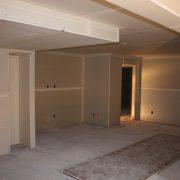Options for Dryer Vents
Ventilation ducts for dryers are quite easy to install and use, but can also cause potentially costly problems. Create a safe and reliable path for hot air to flow, fuzz and to ensure optimal operation for your dryer and protect your home from damage. Some key considerations can help you choose the best methods and materials for a dryer’s vent.
Materials
There are several effective and widely available dryer vent options. The most common is flexible aluminum, which can stretch and bend to follow the desired path. This line works well and is very versatile, but can be a little hard to expand and place at first. If ventilation should extend 10 feet (3 m), you may want to consider the rigid metal pipe. This is similar to heating and cooling ducts in your home and cause minimal air flow resistance, which is important to the other vents. Layered aluminum hoses are also available and can be useful for short distances, although they create greater air resistance than regular aluminum. Never use plastic flexible ducts for dryer vents. Although plastic ducts resemble those of aluminum and are fine for bathing, they do not hold up well with warm air and could catch fire.
Wind Route
Ideally, the path between the dryer and the end of the vent should be as short and straight as possible. If the outputs become longer and include more twists and turns, your dryer will have to work harder to push the air and increase the potential for accumulation of lint, moisture and heat. Most dryers and ventilation components include recommended settings, and the staff in the store where you purchase your system can also offer advice. As a general rule, try to keep ventilation within 25 feet (7.62 m) and minimize the number of bends (especially the 90-degree turns). When using pipes, compress them using metal clamps or foil tape to seal all joints and keep in the air and moisture to prevent it from escaping. If you run the ventilation through an unheated attic, insolate that section of pipe to prevent condensation from forming on the inside.
Starting
The dryer must always be vented to the outside, if possible. Look for a hidden place that is free of obstructions and open to good airflow to put the vent. You may also want to avoid high traffic areas or ones that are highly visible and vulnerable to water damage (for example, the bottom of a deck or stairs) to avoid problems with accumulation of moisture and lint. Ventilation near a patio or through a roof cap is usually a good choice. If needed, you can ventilate an electric dryer in a garage or use an indoor ventilation kit in the basement, but you will get a lot of moisture and lint in that room. For safety reasons, gas dryers must always be well ventilated outdoors.
Maintenance
Be sure to clean the lint trap in the dryer after every load. If possible, avoid using fabric softener, which can worsen the problem of fluff.






